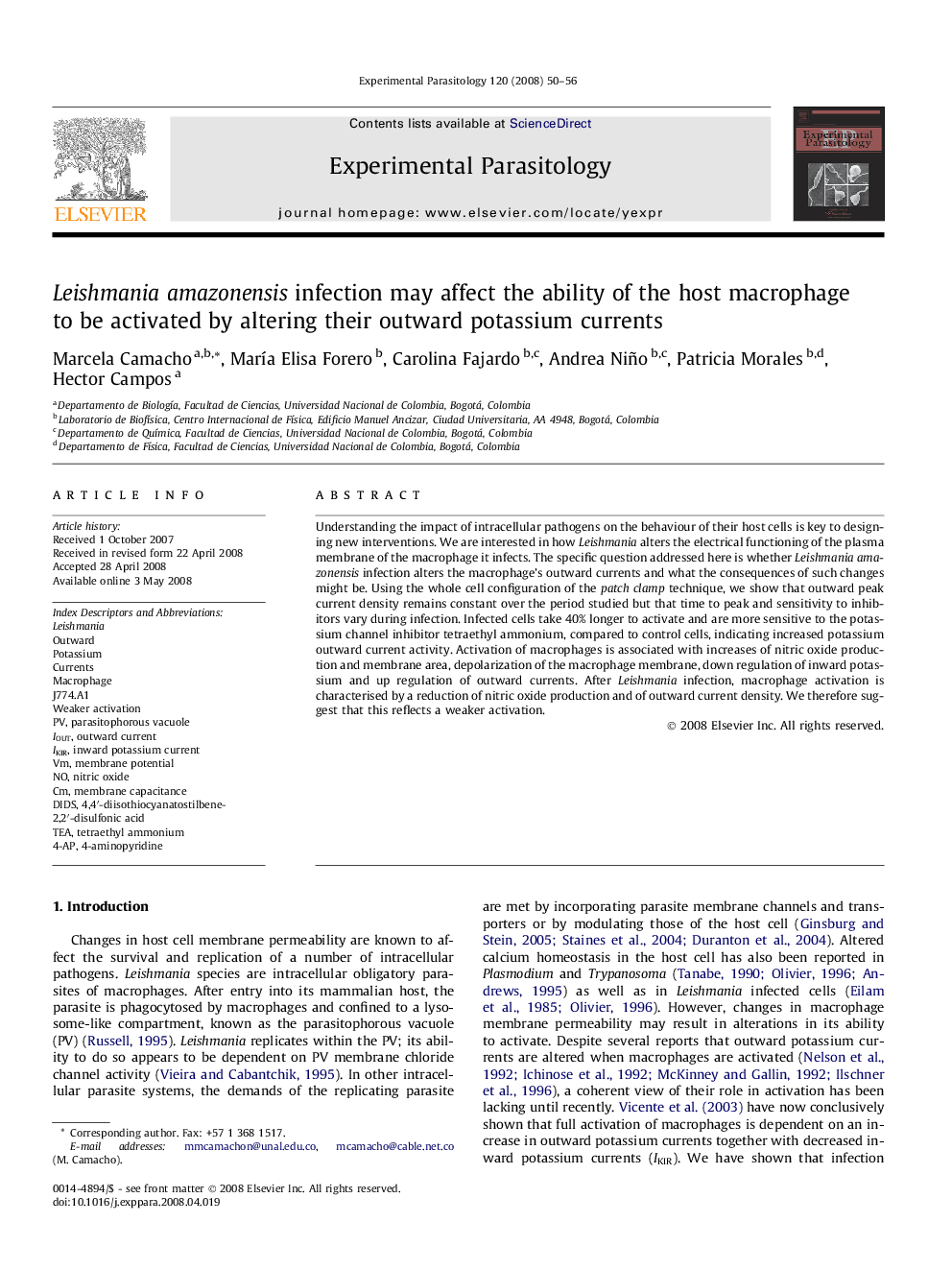| Article ID | Journal | Published Year | Pages | File Type |
|---|---|---|---|---|
| 4371495 | Experimental Parasitology | 2008 | 7 Pages |
Understanding the impact of intracellular pathogens on the behaviour of their host cells is key to designing new interventions. We are interested in how Leishmania alters the electrical functioning of the plasma membrane of the macrophage it infects. The specific question addressed here is whether Leishmania amazonensis infection alters the macrophage’s outward currents and what the consequences of such changes might be. Using the whole cell configuration of the patch clamp technique, we show that outward peak current density remains constant over the period studied but that time to peak and sensitivity to inhibitors vary during infection. Infected cells take 40% longer to activate and are more sensitive to the potassium channel inhibitor tetraethyl ammonium, compared to control cells, indicating increased potassium outward current activity. Activation of macrophages is associated with increases of nitric oxide production and membrane area, depolarization of the macrophage membrane, down regulation of inward potassium and up regulation of outward currents. After Leishmania infection, macrophage activation is characterised by a reduction of nitric oxide production and of outward current density. We therefore suggest that this reflects a weaker activation.
